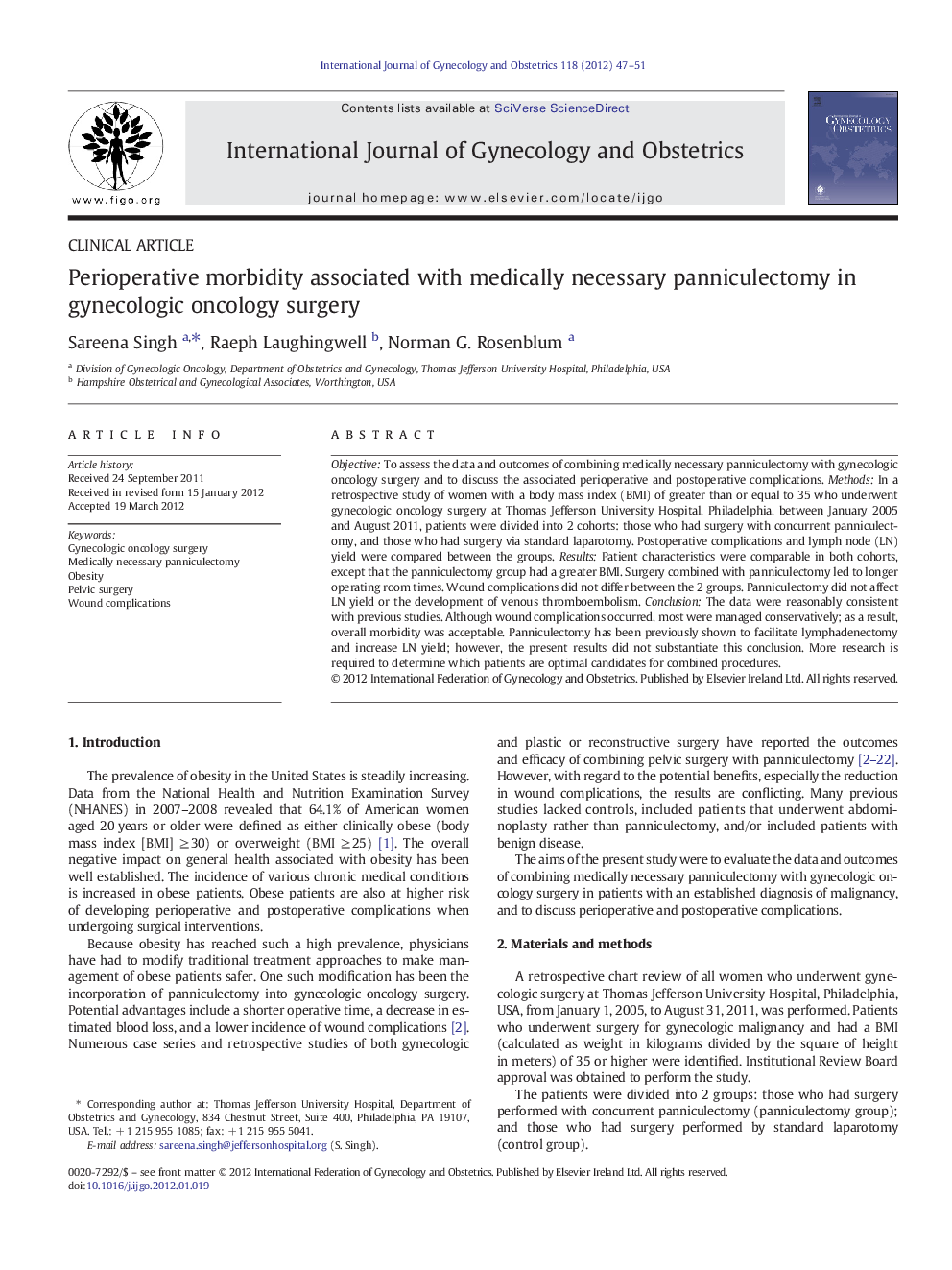| Article ID | Journal | Published Year | Pages | File Type |
|---|---|---|---|---|
| 3952327 | International Journal of Gynecology & Obstetrics | 2012 | 5 Pages |
ObjectiveTo assess the data and outcomes of combining medically necessary panniculectomy with gynecologic oncology surgery and to discuss the associated perioperative and postoperative complications.MethodsIn a retrospective study of women with a body mass index (BMI) of greater than or equal to 35 who underwent gynecologic oncology surgery at Thomas Jefferson University Hospital, Philadelphia, between January 2005 and August 2011, patients were divided into 2 cohorts: those who had surgery with concurrent panniculectomy, and those who had surgery via standard laparotomy. Postoperative complications and lymph node (LN) yield were compared between the groups.ResultsPatient characteristics were comparable in both cohorts, except that the panniculectomy group had a greater BMI. Surgery combined with panniculectomy led to longer operating room times. Wound complications did not differ between the 2 groups. Panniculectomy did not affect LN yield or the development of venous thromboembolism.ConclusionThe data were reasonably consistent with previous studies. Although wound complications occurred, most were managed conservatively; as a result, overall morbidity was acceptable. Panniculectomy has been previously shown to facilitate lymphadenectomy and increase LN yield; however, the present results did not substantiate this conclusion. More research is required to determine which patients are optimal candidates for combined procedures.
